Today I'd like to invite you to another exhibition I visited yesterday. It was another surprise obviously as all I knew was the name of the artist and that the exhibition was brought from Hungary. Not looking up the artist online turned out to be a good decision as that's the only way of allowing yourself to be surprised when you enter the exhibition room.
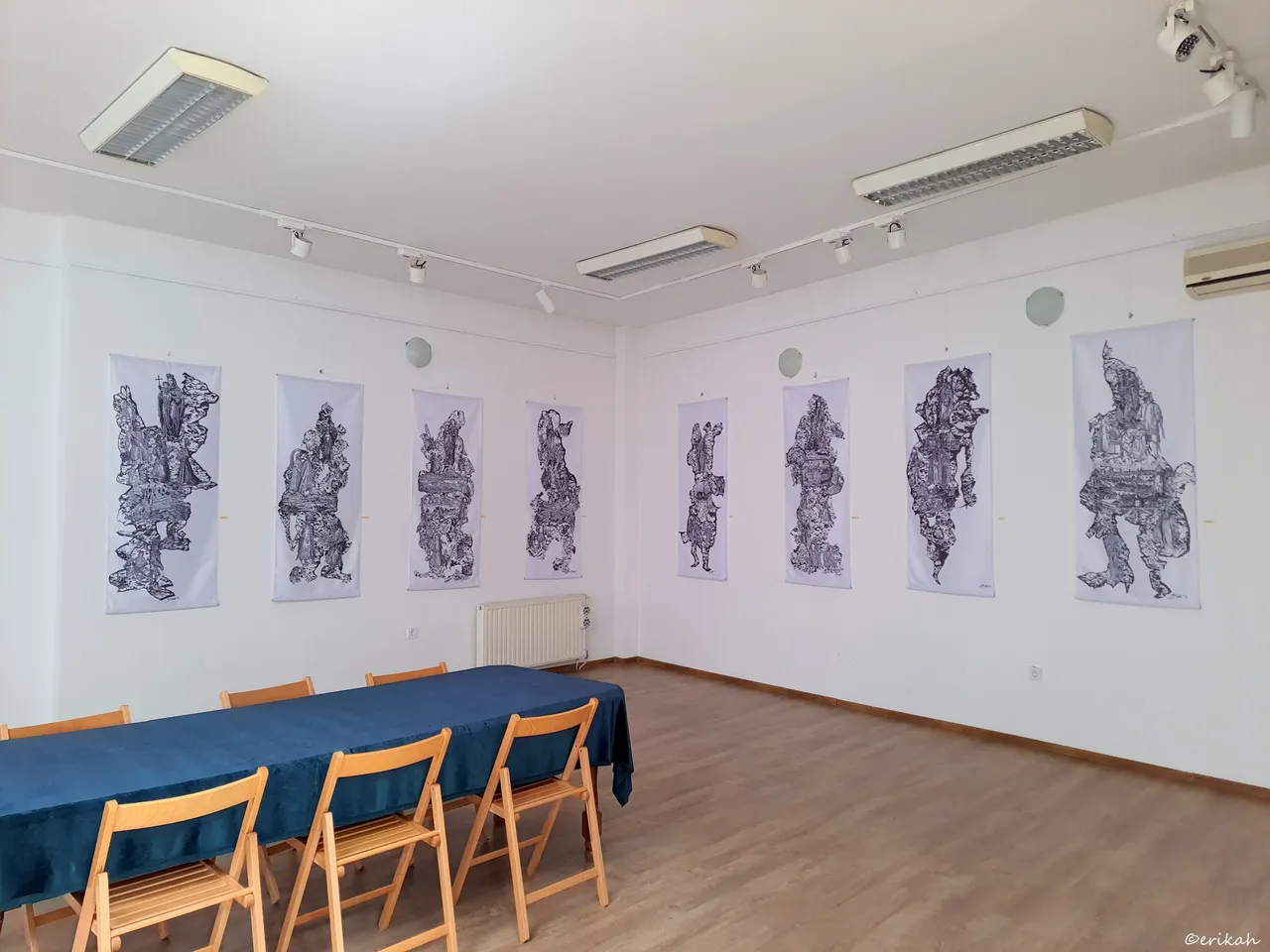
This is what I saw when I had a glance inside the exhibition room. Maybe it doesn't tell you much, but I knew right away I'm going to love it. Lately I had to realize I like detailed black and white drawings, graphics and even though at first I had no idea what techniques were used here, the artworks looked amazing.
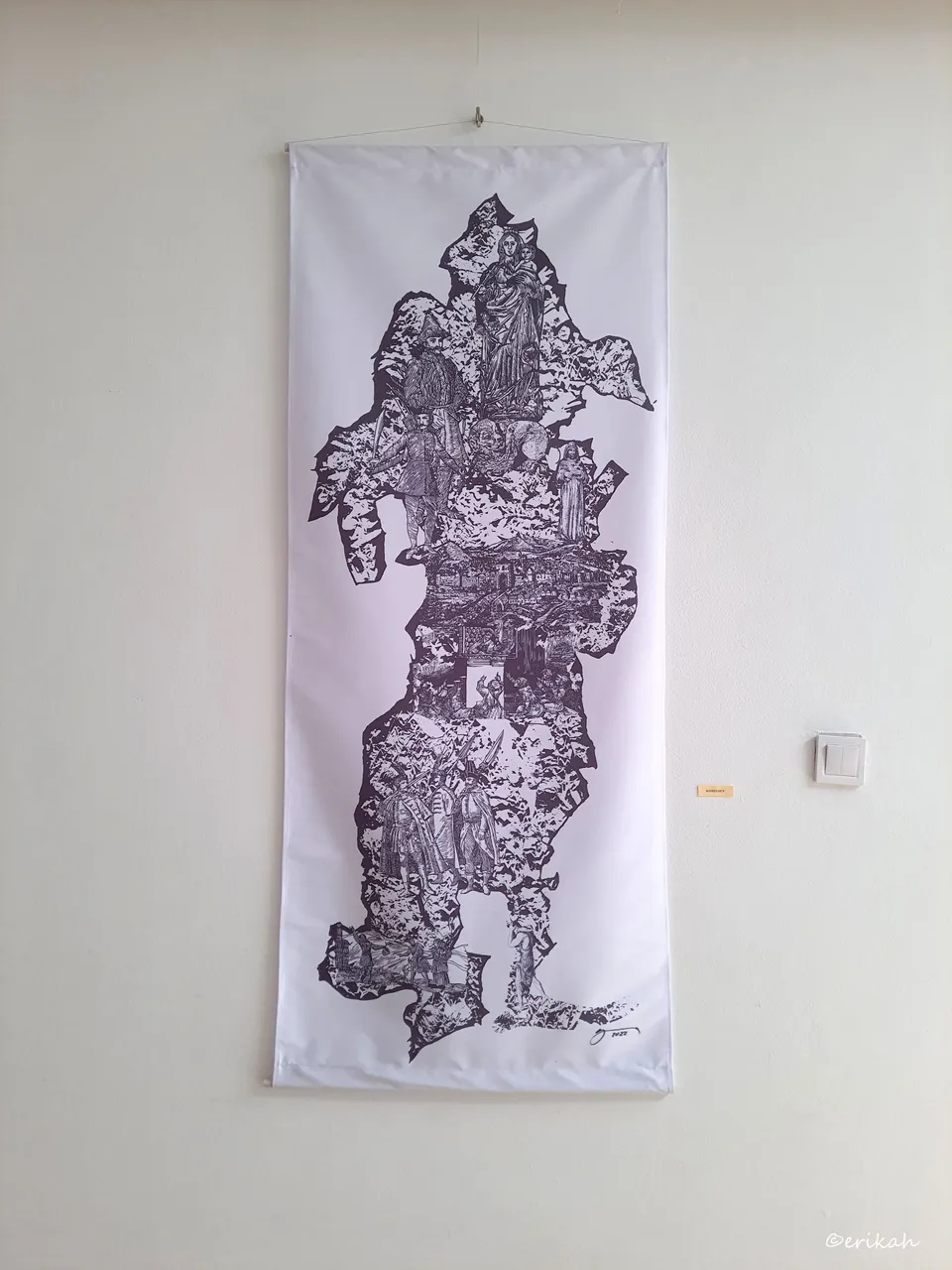
Lights were not on and even though I could have turned the lights on, I thought it was better without lights. A decision which turned out not the best. Once I got home realized the photos had to be processed.
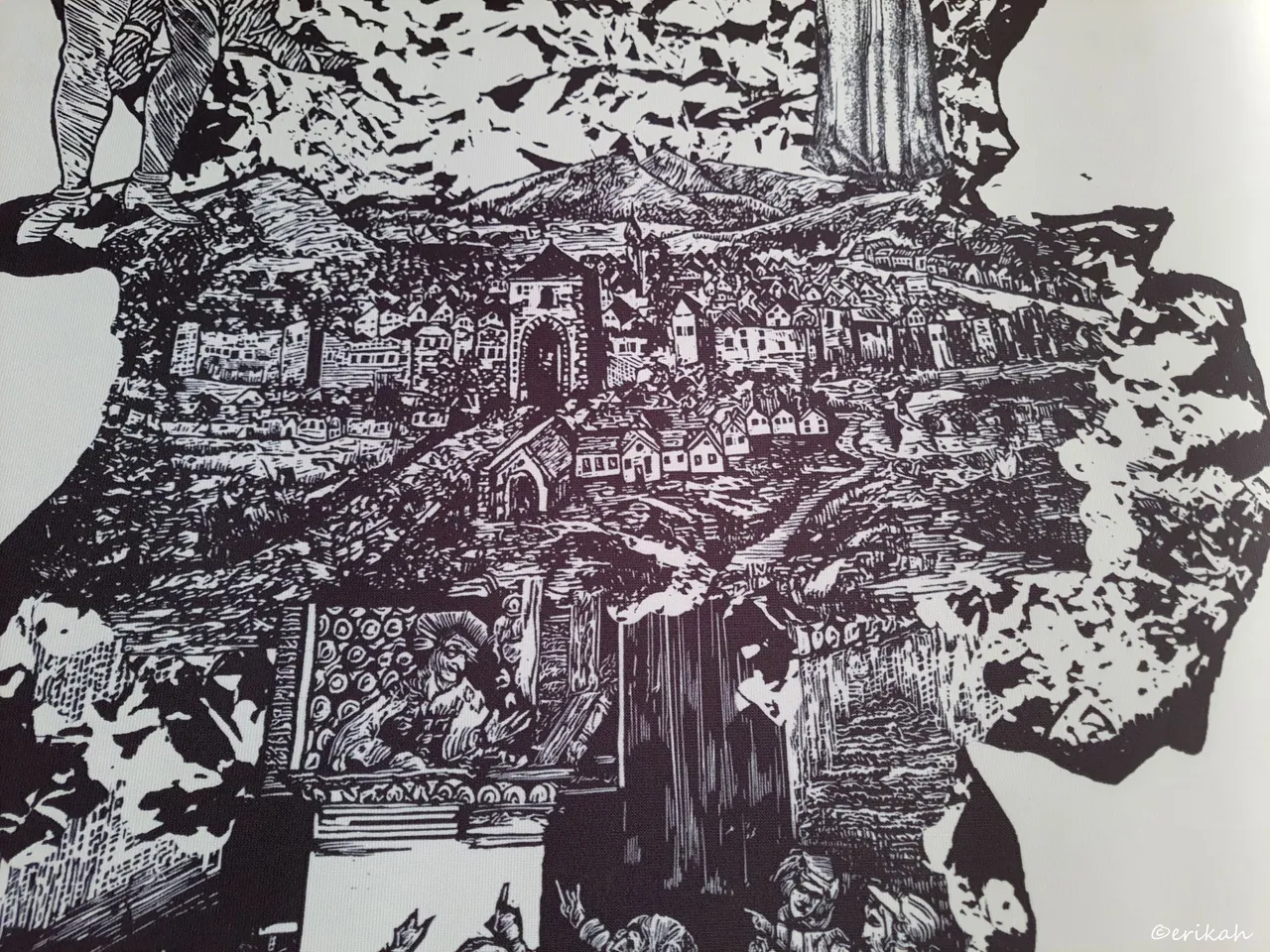
The smartest option was to take some close up photos of each work as for you, I don't think it's obvious what you see.
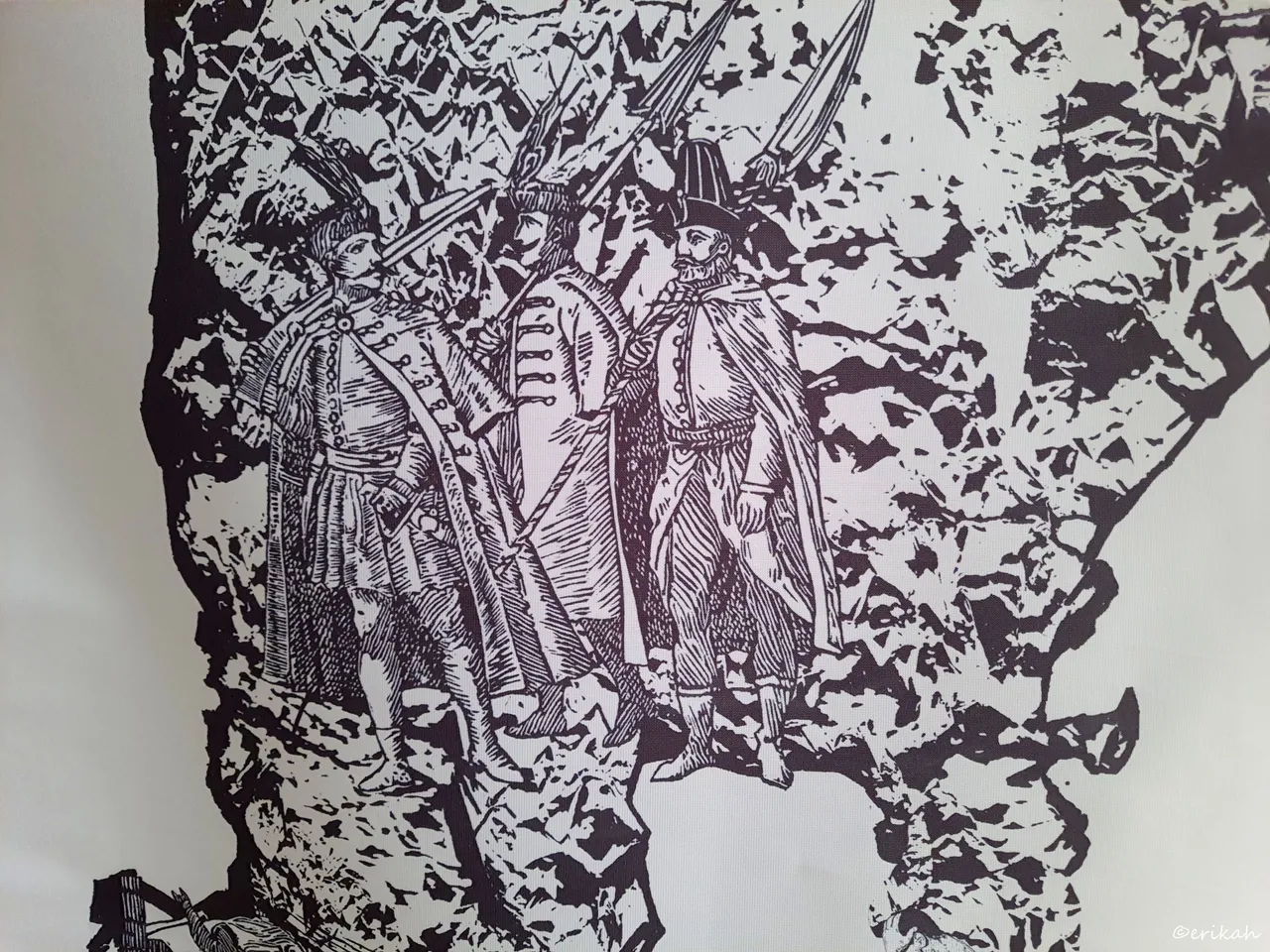
To save you from guessing, I can tell you that this is linocut on (synthetic) canvas.
Linocut, also known as lino print, lino printing or linoleum art, is a printmaking technique, a variant of woodcut in which a sheet of linoleum (sometimes mounted on a wooden block) is used for a relief surface. A design is cut into the linoleum surface with a sharp knife, V-shaped chisel or gouge, with the raised (uncarved) areas representing a reversal (mirror image) of the parts to show printed. The linoleum sheet is inked with a roller (called a brayer), and then impressed onto paper or fabric. The actual printing can be done by hand or with a printing press. source
The artist was Béla Szepessy and the exhibition was called Simplicissimus, which is the Latin word for simplest, very simple.
One of the most exciting thing about not knowing what you're going to see is that you have the chance to guess and figure it out on the spot. It's a mind game and in this case, I can tell you, I was lucky I know a bit of history and could figure out what the artist wanted to show us.
The artwork above is called Kisszeben, which is the Hungarian name of Sabinov.
Sabinov (Latin: Сibinium, Hungarian: Kisszeben, German: Zeben) is a small town located in the Prešov Region (north-eastern Slovakia), approximately 20 km from Prešov and 55 km from Košice. The population of Sabinov is 12,700. source
Kisszeben was not known to me, there's a city called Nagyszeben in Romania, which is called Sibiu in Romanian, but no Kisszeben. Sometimes I check things I don't know on the spot, but yesterday I did not do that, I preferred to guess and see if I was right.
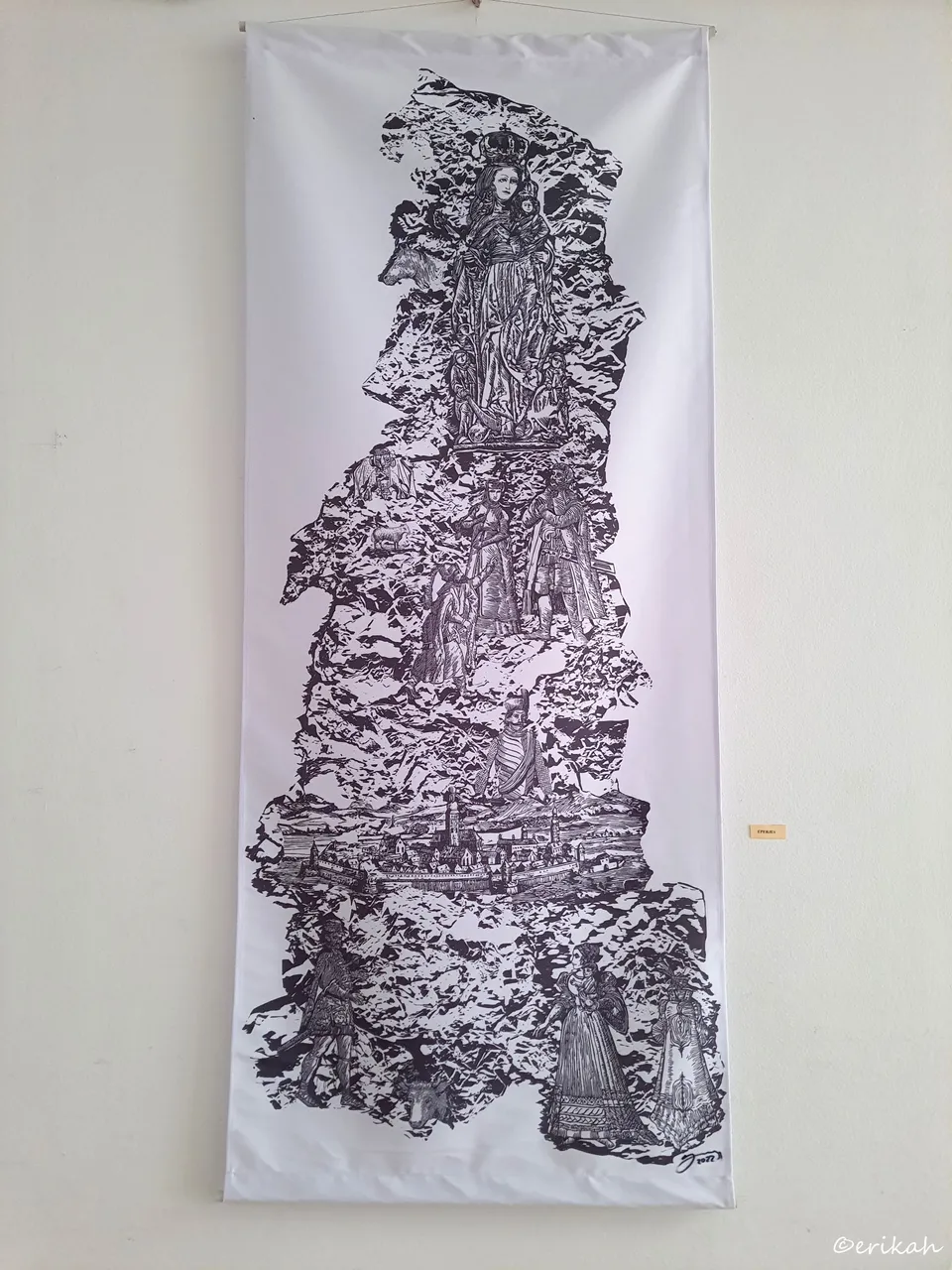
Eperjes
Eperjes is the Hungarian name of the Eastern Slovakian city, Prešov.
Prešov (Slovak pronunciation: [ˈpreʂɔw] (listen), Hungarian: Eperjes, Rusyn and Ukrainian: Пряшів) is a city in Eastern Slovakia. It is the seat of administrative Prešov Region (Slovak: Prešovský kraj) and Šariš, as well as the historic Sáros County of the Kingdom of Hungary. With a population of approximately 90,000 for the city, and in total about 110,000 with the metropolitan area, it is the third-largest city in Slovakia. It belongs to the Košice-Prešov agglomeration and is the natural cultural, economic, transport and administrative center of the Šariš region. It lends its name to the Eperjes-Tokaj Hill-Chain which was considered as the geographic entity on the first map of Hungary from 1528.[6] There are many tourist attractions in Prešov such as castles (e.g. Šariš Castle), pools and the old town. source
Here I started to suspect, that the keyword of the exhibition is Kingdom of Hungary and this is where knowing a bit of history can come in handy.
The Kingdom of Hungary was a monarchy in Central Europe that existed for nearly a millennium, from the Middle Ages into the 20th century. The Principality of Hungary emerged as a Christian kingdom upon the coronation of the first king Stephen I at Esztergom around the year 1000; his family (the Árpád dynasty) led the monarchy for 300 years. By the 12th century, the kingdom became a European middle power within the Western world. source
The Kingdom of Hungary does not exist anymore and some of its regions are now part of Romania, Slovakia, Serbia, Check Republic, Ukraine, Croatia and Austria.

If you have a closer look, all of the linocuts contain fortresses, medieval establishments, historical personalities, like kings and nobles, religious personalities and religious scenes.

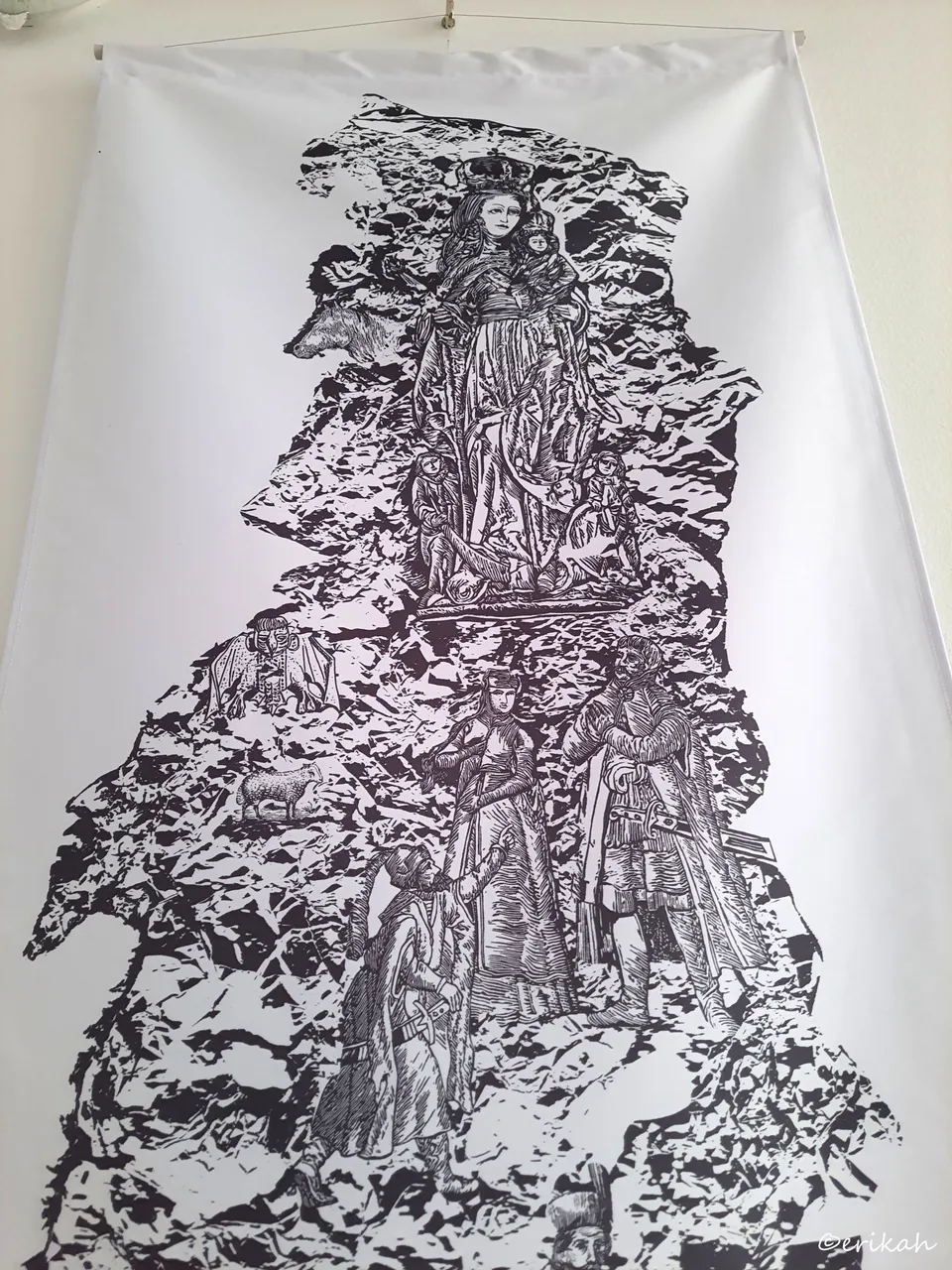
These are all historical scenes.

Nagysáros
Veľký Šariš (Hungarian: Nagysáros) is a small town near Prešov in eastern Slovakia. source
Unfortunately, due to the size of theses canvases, this was the best I could do. I'm not sure, but my estimation was that these were around 1.5m long.
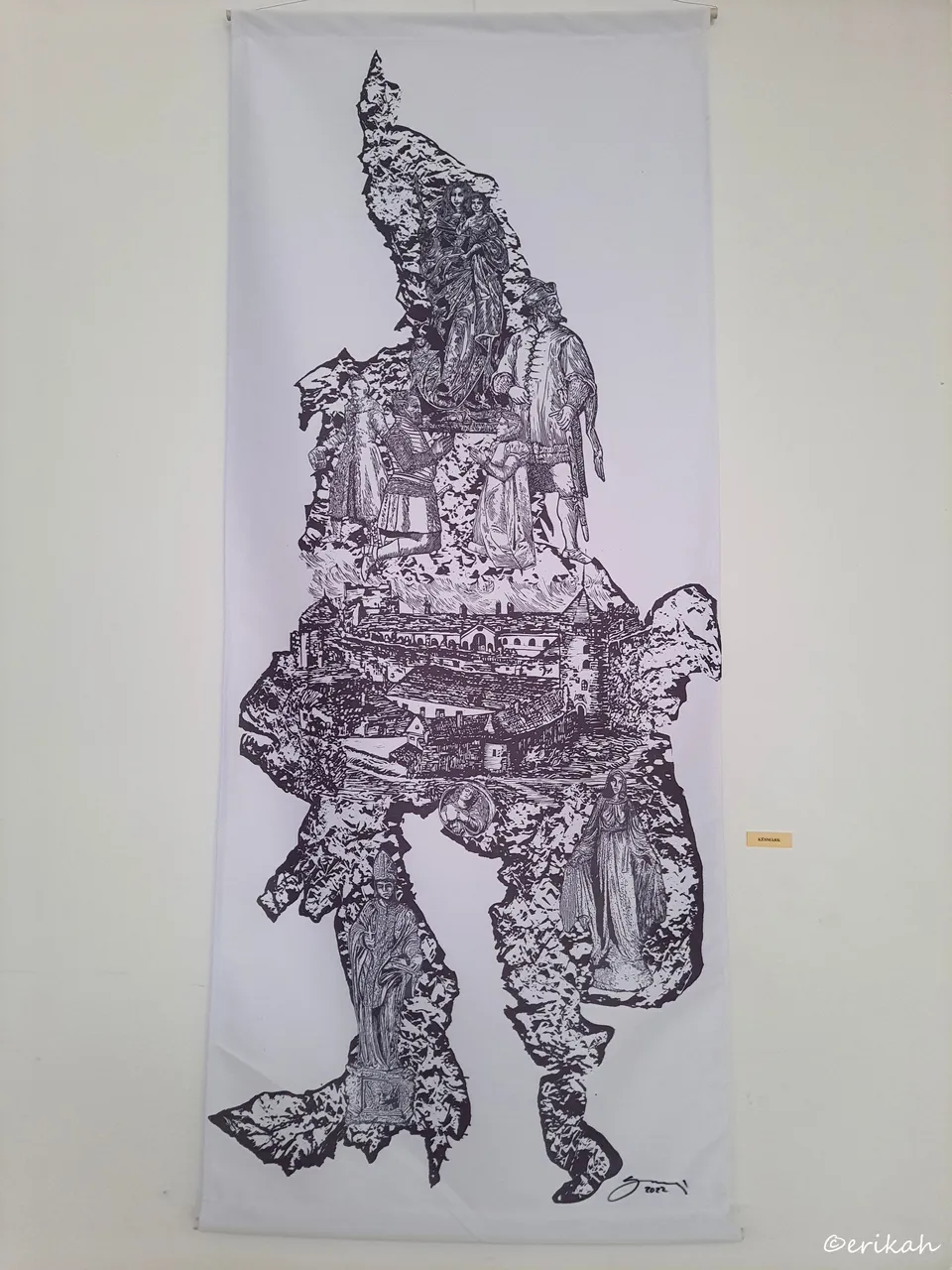
I was standing in the center of the room, trying to figure out what these forms are. Some looked like it could be people, dressed in medieval clothes (?). This shape has two legs, looks like it has a hat as well, but the rest is not clear.
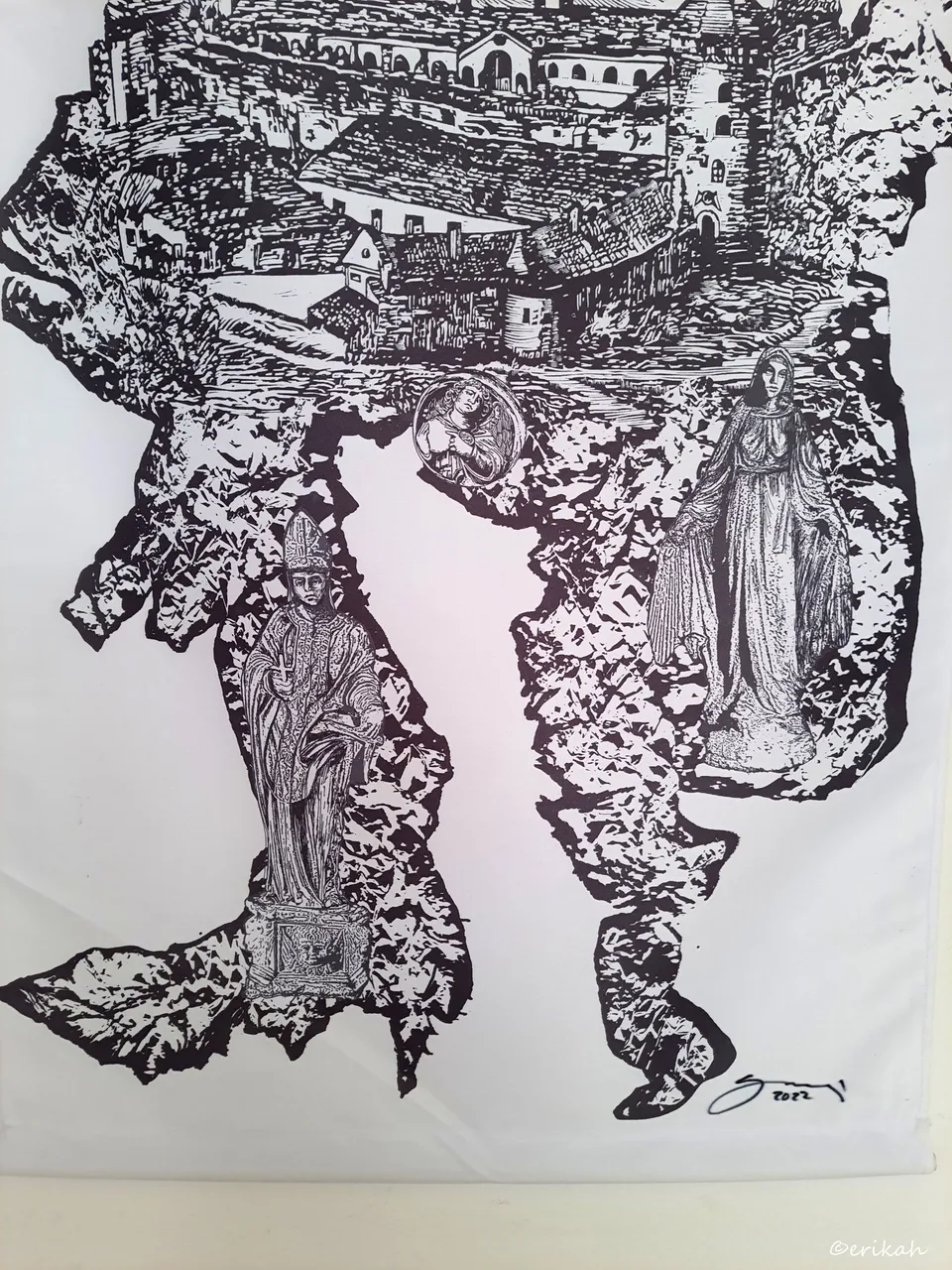
Késmárk (Kežmarok, Slovakia)
Would be nice to visit all these cities one day, to see how those historical city centers look like now.
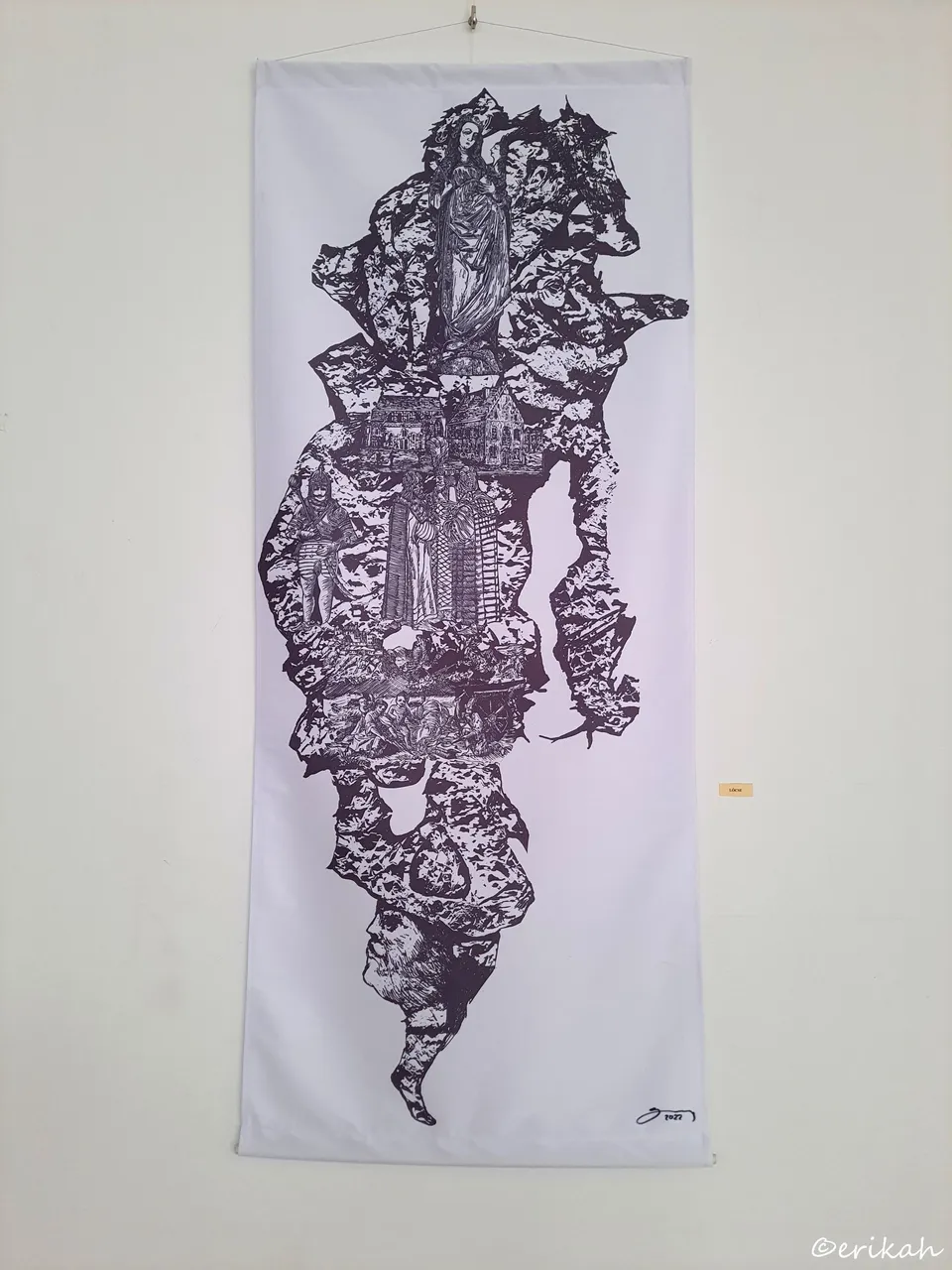
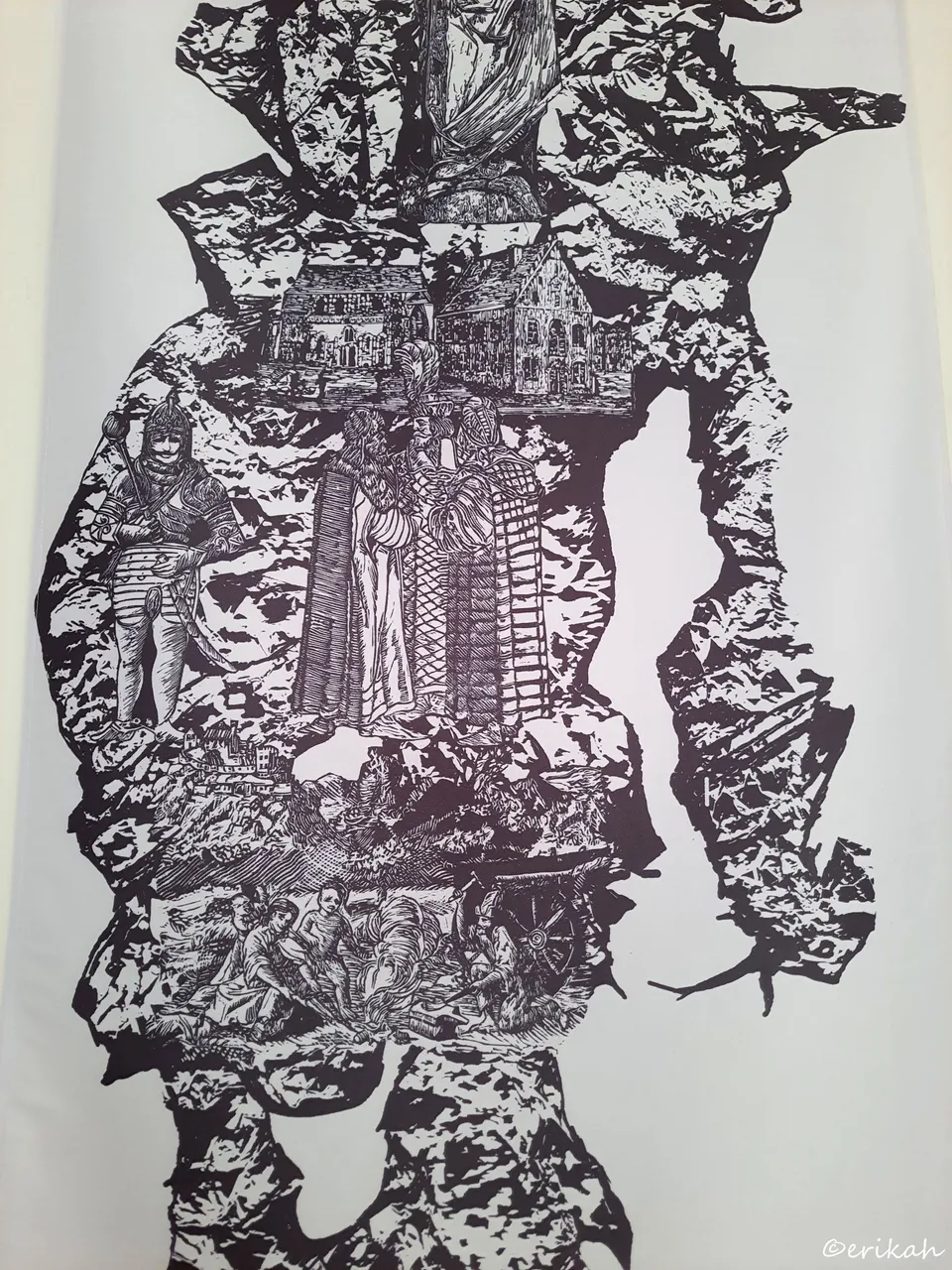
Lőcse (Levoča, Slovakia)
Imagine how much work must have gone into creating the negatives. The details of each work are exceptional.

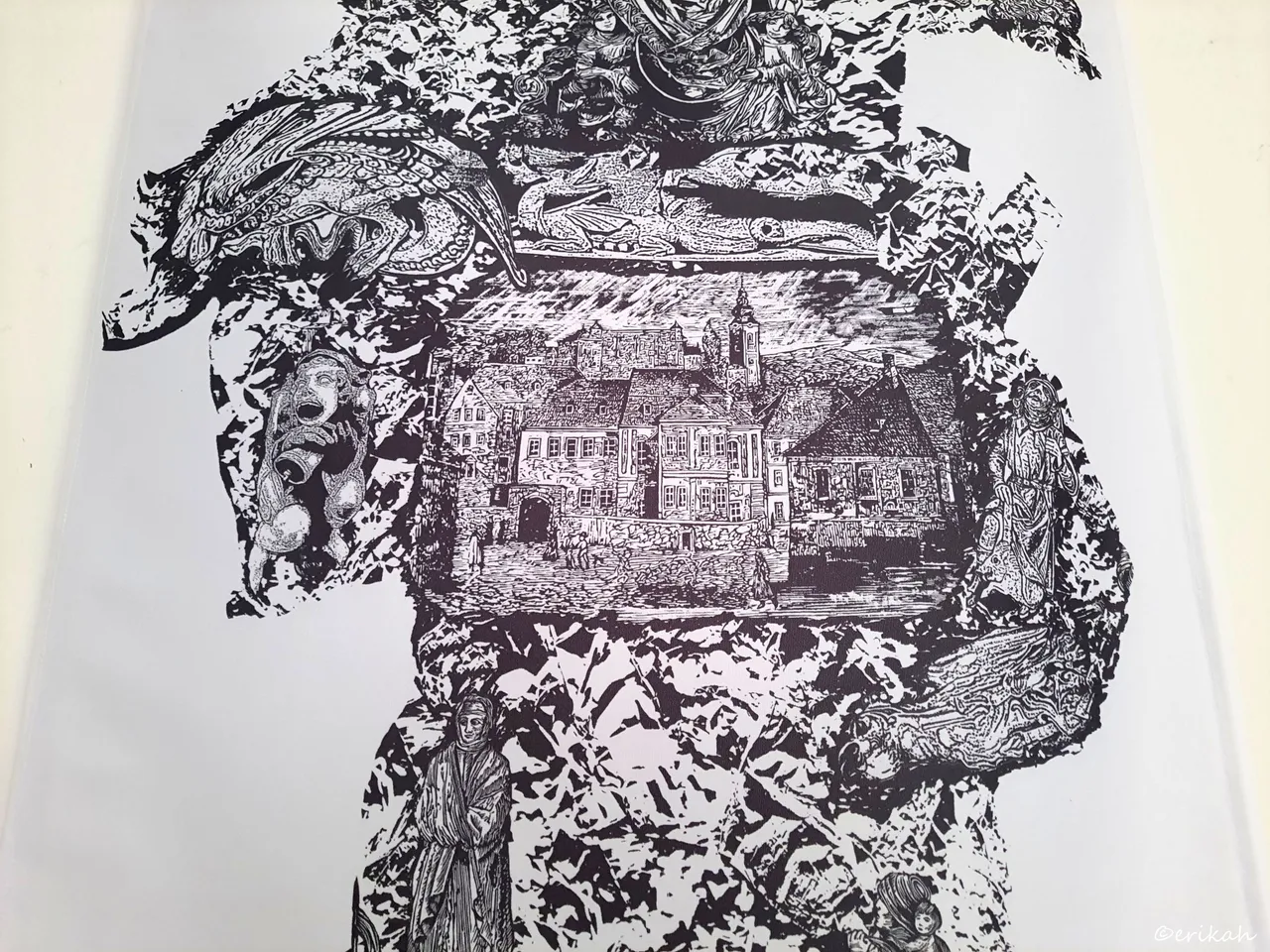
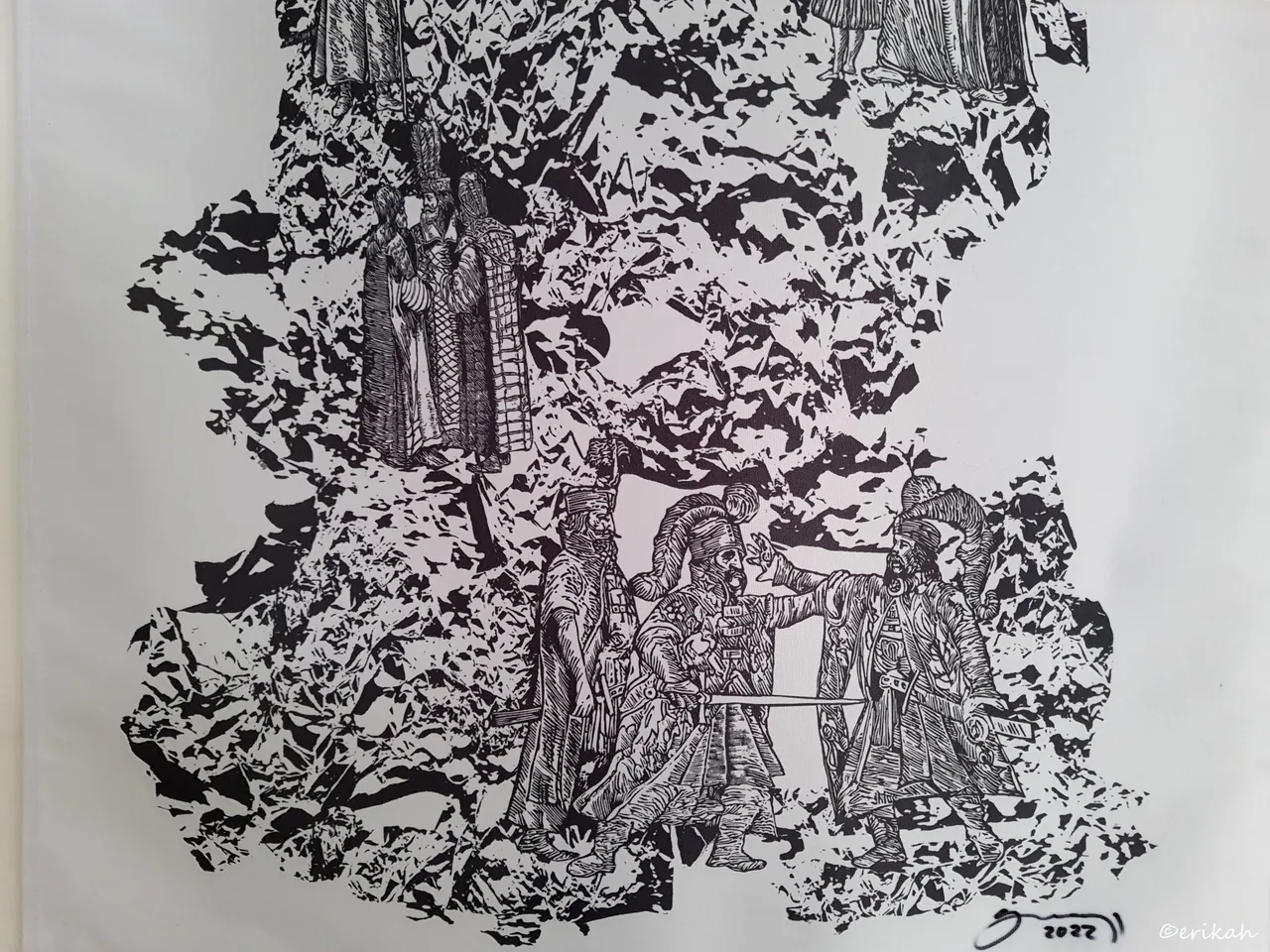
These details could be individual artworks as well as each piece represents a scene from history.
I hope one day I'll see the process of creating such beauties live.

If you're a newbie, you may want to check out these guides:
- Communities Explained - Newbie Guide
- Cross Posting And Reposting Explained, Using PeakD
- Hive Is Not For Me
- How To Pump Your Reputation Fast - Newbie Guide
- Tips And Tricks & Useful Hive Tools For Newbies
- More Useful Tools On Hive - Newbie Guide
- Community List And Why It Is Important To Post In The Right Community
- Witnesses And Proposals Explained - Newbie Guide
- To Stake, Or Not To Stake - Newbie Guide
- Tags And Tagging - Newbie Guide
- Newbie Expectations And Reality

